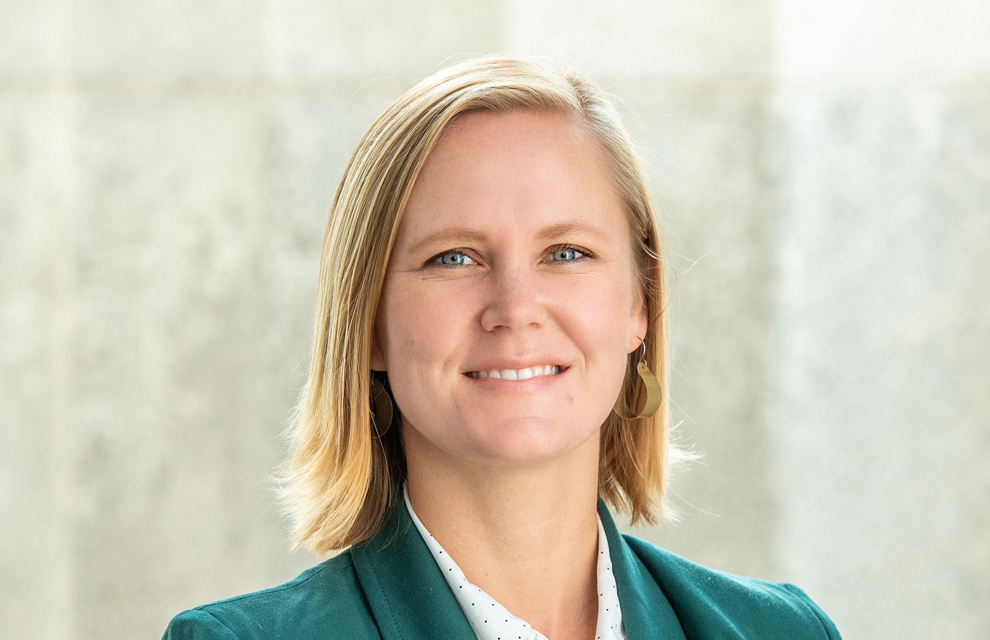State of Vermont
Following the year in which Vermont celebrated its 40th anniversary as a ‘gold standard’ captive domicile, Brittany Nevins reflects on trends in the Green Mountain State’s captive industry, regulatory developments and emerging risks
What trends did you observe in the Vermont captive market in 2021? How do you assess the landscape going into 2022?
We have observed a few trends this year. One trend the broader captive insurance industry is seeing is a high number of new captive formations, and certainly Vermont has seen that this year. The regulatory team has been very busy with wrapping up the new formations by year end, with 45 new captive formations to date, up from 38 last year — and already there is a high number of captives that plan to license at the start of the new year. 2021 is our fourth highest year for captive formations out of our entire 40-year history. Additionally, few captives have dissolved this year compared to years past. At year end in 2020, we had 589 captives and currently we have 625 captives licensed in Vermont.
We are continuing to see new captive formations from every industry and many different types of captives, but we are seeing more formations of agency and cell captive types especially. Nine of the 45 new companies formed this year were sponsored cell companies, two of which were formed by agencies.
We have also approved agency-styled cells within existing sponsored cell companies. There are a few likely reasons for this. In 2017, the Vermont legislature passed a bill to add agency captives and we are now seeing the results of that legislation. Another reason is the hard insurance market that continued through 2021. For the cell formations, many companies are realising the opportunity and flexibility the cell structure provides for their company.
Going into 2022, there continues to be tremendous interest in captives as an alternative risk management tool. We have a great foundation for success that we will continue to build on into next year. The slowdown of captives dissolving will likely continue well into the future as well.
What were the most significant challenges facing the captive market in 2021? How do you see these challenges evolving into 2022?
Staffing for all aspects of the insurance industry has been a challenge for some time, and the COVID-19 pandemic did not help! Captive insurance continues to be an industry that few have heard of and consider as a career option. While this challenge will not go away in 2022, there are many efforts being made to raise awareness about the captive industry as a career choice. In Vermont we plan to release an informational video about working in the captive industry, as well as planning to launch a career webpage with information and resources available to those interested in working in the industry. I also plan to make targeted efforts to speak with students in a variety of fields about the benefits of this niche industry. This is just the start of a long-term plan to grow the captive industry workforce.
Taxation of captives by non-domicile states is a complex issue that will likely have an impact on captives wherever they are domiciled. There could be significant variability in taxation among non-regulatory states that could make it more challenging for captives to form and sustain themselves.
Are there any regulatory developments in the pipeline for Vermont in 2022?
Nearly every year over the last 40 years Vermont has passed a captive bill. It is considered a tradition as we know that there is always room for improvement, no matter how small. We feel it is important to modernise our statutes every year to keep pace with the captive industry and improve our regulatory processes. The captive bill is put forth as a collaborative effort by the Vermont Captive Insurance Association and the Vermont Department of Financial Regulation (DFR). This year is no different, and we have identified a few areas for minor improvement and clarity. We want to be sure the law accurately reflects the DFR’s preferred practices and expectations of companies to prevent confusion or misunderstandings around statutory language.
Additionally, we are working on specific language in the upcoming captive bill in 2022 to allow for captives to utilise parametric risk contracts as an additional risk management tool. Although parametric risk is not considered insurance, parametric risk contracts are becoming commonplace as another form of financial protection for catastrophic events, and we want to support captives in accessing this tool.
How do you expect emerging risks to continue to unfold in 2022?
Cyber and climate change continue to be emerging risks in 2022. Cyber attacks and climate-related storms have become more frequent and severe over time — and they are not risks that will go away anytime soon. These risks are intimately connected with public policy, the influence of which can have significant impacts on the insurance industry and the way these risks are understood and quantified. Discussions around ESG in the captive industry seem to be increasing as a result of the increased interest in the emerging risk of climate change. Additionally, the use of parametric risk contracts have become more of a tool utilised by captives to address the emerging risk of climate change. It is not clear how these risks will continue to unfold, but they certainly will not be going away in 2022.
What is top of the department’s development agenda for 2022?
It would be simple in years of success to give ourselves a perfect score and be closed to the possibility of improvement, but we find that in years of success and when times are busy, we can more easily identify issue areas in our internal processes. Within the DFR there have been fruitful discussions internally around areas for improvement.
Changes in internal procedures are underway, a need to hire more staff has been identified, and there is an effort to improve communications with companies to ensure an even more efficient process and clear expectations. We always want to constantly be improving in times of challenge and success, which is part of what makes Vermont unique as a domicile.





